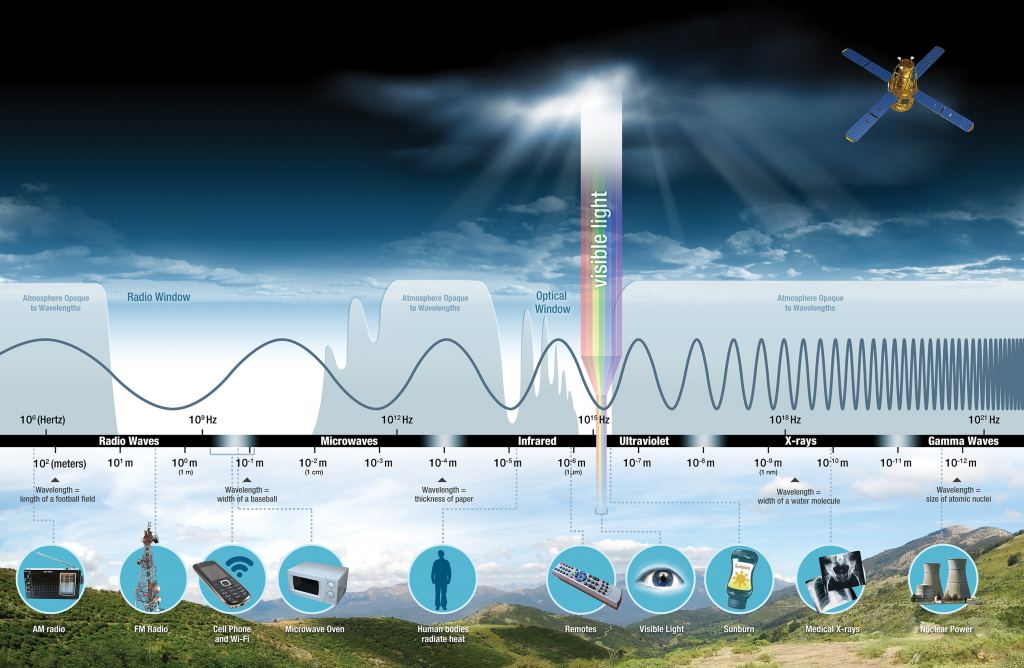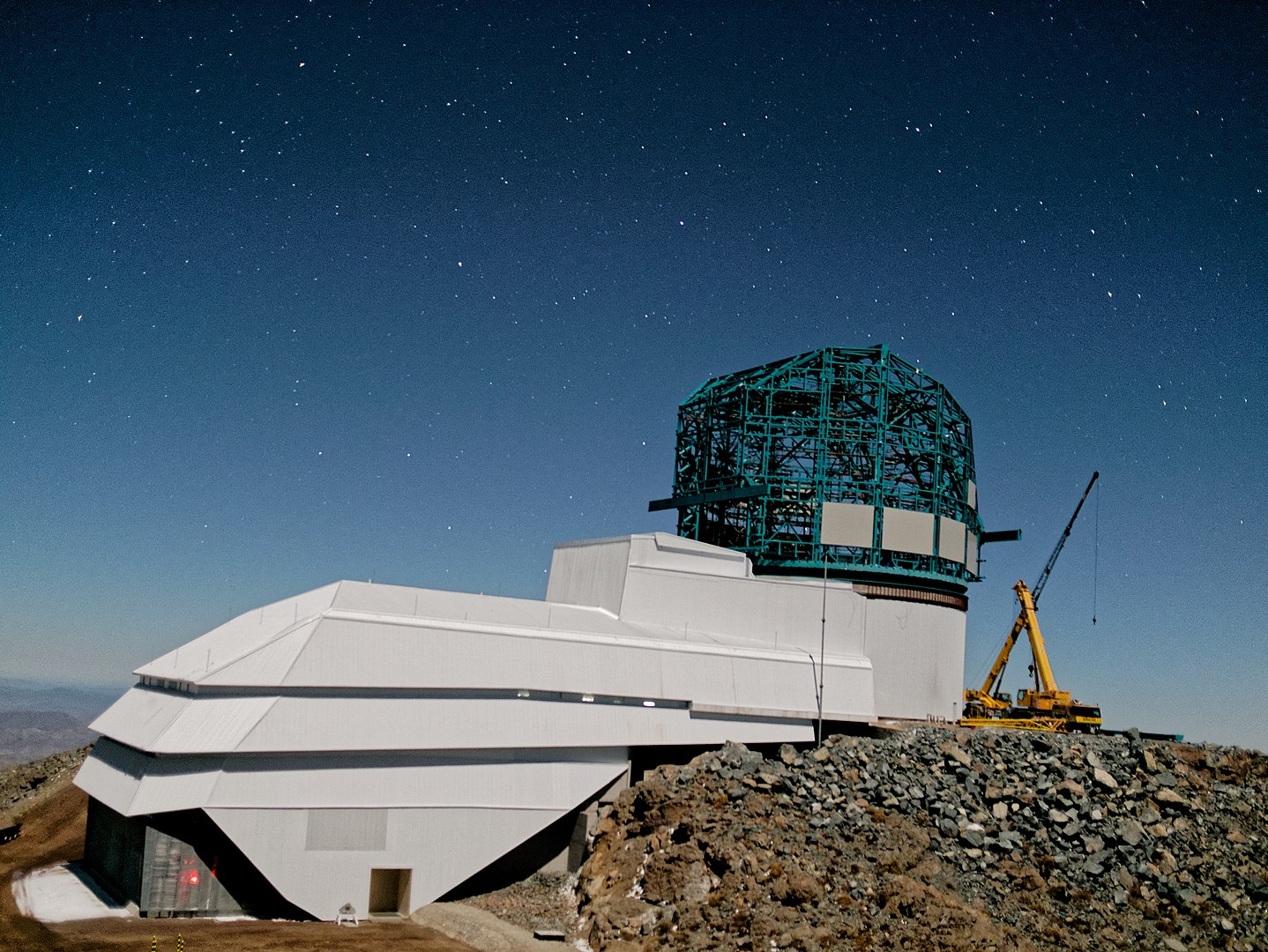The Vera C. Rubin Observatory, formerly the Large Synoptic Survey Telescope (LSST), will commence operations sometime next year. Not wanting to let a perfectly good acronym go to waste, its first campaign will be known as the Legacy Survey of Space and Time (LSST). This ten-year survey will study everything from dark matter and dark energy to the formation of the Milky Way, and small objects in our Solar System.
According to a new study by Amir Siraj and Prof. Abraham Loeb of Harvard University, another benefit of this survey will be the discovery of interstellar objects that regularly enter the Solar Systems. These results, when combined with physical characterizations of the objects, will teach us a great deal about the origin and nature of planetary systems (and could even help us spot an alien probe or two!)
When ‘Oumuamua flew past Earth in October of 2017, it became the first interstellar object ever observed by astronomers. Now, years after that momentous event, scientists are still theorizing what it could have been – recent theories suggest it might be a dark hydrogen iceberg or an interstellar “dust bunny.” But perhaps the most intriguing possibility was the one suggested by Prof. Loeb himself.

In a 2018 study that appeared in The Astrophysical Journal – titled “Could Solar Radiation Pressure Explain ‘Oumuamua’s Peculiar Acceleration?” – Dr. Shmuel Baily and Prof. Loeb proposed that the interstellar object might actually be an interstellar spacecraft. This was based partly on the spectra obtained from ‘Oumuamua, and how it mysteriously accelerated on its way out of the Solar System.
Regardless of whether ‘Oumuamua was an alien probe or not, Baily and Loeb asserted that it was (at the very least) a new class of object that astronomers have never before seen. In September of 2019, a second interstellar object (2I/Borisov) was spotted passing through our Solar System. While this one was clearly a comet, it helped to illustrate how interstellar objects regularly visit our Solar System (and some even stay!)
An observatory like Vera C. Rubin, therefore, presents a major opportunity to learn more about interstellar objects and the processes that lead to the formation and nature of Solar Systems. For one thing, by studying objects within the Solar System, it could potentially multiply the number of objects we have to study. As Prof. Loeb told Universe Today via email:
‘Oumuamua and Borisov were the first two interstellar objects confirmed in the solar system. The sky survey planned to start in a couple of years with the Vera C. Rubin Observatory, called the Legacy Survey of Space of Time (LSST), could find a new interstellar object every month if they populate random trajectories. Our paper addresses the question of what can be learned from large-number statistics of interstellar objects.

The LSST will rely on the Rubin Observatory’s Simonyi Survey Telescope (SST), a large-aperture, wide-field, ground-based telescope to survey the southern sky in the optical bands ranging from 320 to 1050 nm (from the near-ultraviolet to the infrared). Its three large mirrors will be actively controlled to correct for atmospheric distortions and images will be captured using a 3,200-megapixel digital camera.
Between its technical capabilities and the eight scientific collaborations that will rely on its data, Vera C. Rubin is expected to yield valuable scientific returns. These include measuring the rate of expansion to determine the influence of dark energy and dark matter, mapping out the Milky Way, detecting transient events like novae, supernovae, gamma-ray bursts (GRBs), and other phenomena.
It will also allow astronomers to increase the number of small objects cataloged in the Solar System – such as asteroids and Kuiper Belt Objects (KBOs) – by a factor of 10 to 100. Combined with accurate models that predict the speed at which interstellar objects will travel once they reach the Solar System, Siraj and Loeb show how the LSST could multiply the number of known interstellar objects in our Solar System.
“The Vera C Rubin Observatory will observe the sky at both unprecedented depth and cadence,” Siraj told Universe Today (also via email). “As a result, it is poised to greatly improve our understanding of small bodies in the Solar System, including interstellar objects.

As they indicate in their study, the speed at which objects are ejected from their respective systems (which is comparable to their orbital speeds before they were “kicked”) is essential to understanding where in the system they originated. For instance, objects in the outer reaches would be easily ejected due to a passing star and would have low ejection speeds as a result. These are also likely to be the most common type of interstellar objects as a result.
Similarly, gravitational interactions with planets near or within a star’s habitable zone (HZ) that resulted in ejections would result in lots of planetesimals traveling at high speeds. These speeds would be consistent with the objects’ orbital velocity within their star’s HZ, and would therefore tell scientists a great deal about the mechanics at work in that system. As Loeb explained, they considered all of this while making their calculations:
“We considered ejection of interstellar objects in random directions relative to the velocity of their host stars and calculated the resulting distribution of velocities when they get into the Solar system, taking account of the special velocity of the Sun relative to the stars in its neighborhood.”
“Since interstellar objects are produced in planetary systems around other stars, we adopted the kinematics of stars plus an additional velocity component that accounts for the ejection speed of the object relative to the star,” added Siraj.
What they found was that the typical ejection speed of an object could be inferred from the velocity it had once it arrived in the Solar System and the direction of its arrival. In this respect, their velocity would serve as an indicator of just how close they were to their stars when they formed and when they were ejected. Or as Siraj summarized:
“We found that the distribution of speeds at which interstellar objects travel and the directions from which they originate will encode information about the ‘kick’ that interstellar objects receive as they leave their parent star. This ‘kick’ speed reflects the region in the planetary from which the object originated, affording insights into how planetary system formation works, and how interstellar objects are created.”
For example, if they originated in the outskirts, like the Oort clouds of the Solar system, their kick velocity would be negligible. On the other hand, if they originated in a system’s HZ, the velocity could exceed the range of stellar velocities in their solar neighborhood (10s of km/s). Knowing their birth place, therefore, could provide important clues regarding the processes that created them as well as their nature.
By extension, the study of these objects will yield valuable insight into the processes by which asteroids, comets, and planets are formed in star systems. And, if as Dr. Baily and Prof. Loeb have suggested, some of these objects could actually be interstellar space probes exploring the Universe, then the possibilities are even more profound.
“Objects of interest to SETI searches could potentially be discernable by unusual speeds and directions of origin,” said Siraj. Combined with Vera C. Rubin’s ability to provide prompt notifications of a detection event (which will facilitate follow-up observations considerably), astronomers would be able to see these objects coming long before they pass close to our Sun or make a flyby of Earth.
“If weird objects like `Oumuamua were produced by technological civilizations, then they may represent a ‘message in a bottle,'” added Loeb. This possibility is something that Prof. Loeb discusses in great detail in his forthcoming book, titled “Extraterrestrial: The First Sign of Intelligent Life Beyond Earth” – scheduled to be published on January 26th, 2021 (I pre-ordered my copy!)
Siraj and Loeb’s recommendation is a good example of how advances in one area of astronomy can yield positive results in another. By using next-generation instruments and observatories to catalog more stars, more planets, and more objects, astronomers will invariably have more examples of what is possible in our Universe. The study of these objects will also tell us a great deal about the physics and mechanics that govern it.
And, if it’s not too much to hope for, maybe an interstellar probe or two will be found in the process. Considering what we sent out there with the Pioneer Plaques and Voyager Records, it will be interesting to see what a message from an extraterrestrial species will have to say! My money is on “Do not reply!”
Further Reading: arXiv

